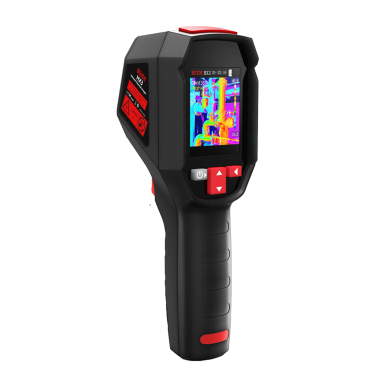Infrared Thermometer: Essential Tool for Accurate Temperature Measurement
April 25, 2025 | News | No Comments

# Infrared Thermometer: Essential Tool for Accurate Temperature Measurement
## What is an Infrared Thermometer?
An infrared thermometer is a non-contact temperature measurement device that detects infrared energy emitted by an object and converts it into a temperature reading. These devices are widely used in various industries, healthcare, and even household applications due to their convenience and accuracy.
## How Does an Infrared Thermometer Work?
Infrared thermometers operate on the principle of detecting thermal radiation. Every object with a temperature above absolute zero emits infrared energy. The thermometer’s lens focuses this infrared light onto a detector, which converts the radiation into an electrical signal. This signal is then processed and displayed as a temperature reading.
Key components of an infrared thermometer include:
– Optical system (lens)
– Infrared detector
– Signal processing unit
– Display screen
## Advantages of Using Infrared Thermometers
Infrared thermometers offer several benefits over traditional contact thermometers:
- Non-contact measurement: Allows temperature reading without touching the object, ideal for hazardous or hard-to-reach surfaces
- Quick results: Provides instant temperature readings, often in less than a second
- Hygienic: Eliminates cross-contamination risks, especially important in medical and food service applications
- Versatility: Can measure moving objects or surfaces that would be damaged by contact probes
- Wide temperature range: Capable of measuring extremely high or low temperatures safely
## Common Applications of Infrared Thermometers
Medical Use
Infrared thermometers have become essential in healthcare, particularly for measuring body temperature. They enable quick, non-invasive screening for fever, which became especially important during the COVID-19 pandemic.
Industrial Applications
In manufacturing and maintenance, infrared thermometers help monitor equipment temperature, detect overheating components, and ensure proper operation of machinery.
Food Safety
Restaurants and food processing facilities use infrared thermometers to check food temperatures without contamination, ensuring proper cooking and storage conditions.
HVAC Systems
HVAC technicians rely on infrared thermometers to diagnose system performance, check duct temperatures, and identify insulation problems.
## Choosing the Right Infrared Thermometer
When selecting an infrared thermometer, consider these factors:
| Feature | Consideration |
|---|---|
| Temperature Range | Ensure it covers your expected measurement needs |
| Distance-to-Spot Ratio | Higher ratios allow measurement from greater distances |
| Emissivity Settings | Adjustable settings improve accuracy for different materials |
| Response Time | Faster response is better for moving targets |
| Additional Features | Backlit display, data logging, laser targeting, etc. |
## Proper Use and Maintenance Tips
Measurement Techniques
For accurate readings:
- Keep the thermometer perpendicular to the surface
- Maintain proper distance according to the device’s specifications
- Ensure the target area is larger than the measurement spot size
- Avoid measuring through glass or other transparent barriers
Keyword: infrared thermometer
Maintenance
To maintain accuracy:
- Regularly clean the lens with appropriate materials
- Store in a protective case when not in use